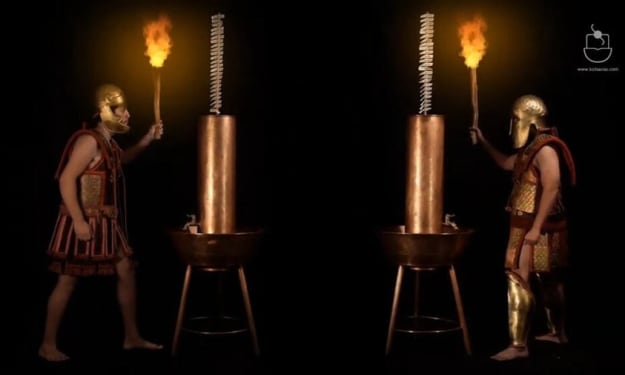World War I: Catalysts, Battles, and Transformations
From Trenches to Treaties: Unveiling the Epic Saga of World War I

World War I, also known as the Great War, was a global conflict that took place from 1914 to 1918. It emerged from a complex web of political tensions, territorial disputes, and military alliances. This article delves into the multifaceted aspects of World War I, exploring its underlying causes, major battles, and the profound transformations it brought about. From the horrors of trench warfare to the signing of pivotal treaties, we uncover the impact of this monumental conflict that reshaped the geopolitical landscape and set the stage for the modern era.
Precursors and Catalysts :
The seeds of World War I were sown in the late 19th and early 20th centuries. Growing rivalries among major powers, fueled by imperial ambitions and intense nationalism, created a volatile climate in Europe. The assassination of Archduke Franz Ferdinand of Austria-Hungary in June 1914 served as a catalyst, sparking a series of events that led to the outbreak of war. The complex network of alliances quickly drew nations into a devastating conflict that would engulf the world.
The Trenches and Stalemate :
World War I witnessed the gruesome introduction of trench warfare, where soldiers dug into elaborate systems of trenches, enduring unimaginable hardships and facing relentless enemy attacks. The Western Front, stretching across Belgium and France, became a symbol of the brutal stalemate that characterized much of the war. Massive offensives, such as the Battle of the Somme and the Battle of Verdun, resulted in staggering casualties but yielded limited territorial gains.
Global Reach and Turning Points :
Although centered in Europe, World War I extended its reach far beyond the continent. Conflict spread to the seas, with naval battles like the Battle of Jutland between British and German forces. The war also expanded to the Middle East, where the Ottoman Empire joined the Central Powers and faced off against Allied forces, leading to campaigns in Gallipoli and Mesopotamia.
Noteworthy turning points emerged during the course of the war. The entry of the United States into the conflict in 1917 provided a significant boost to the Allied cause. The innovative use of tanks, airplanes, and chemical weapons introduced new dimensions to warfare, transforming the nature of battle.
Armistice and Legacy :
The exhaustion and staggering loss of life eventually led to negotiations for peace. In November 1918, an armistice was signed, effectively ending the hostilities. The subsequent Treaty of Versailles, signed in 1919, imposed harsh terms on Germany and its allies, seeking to address the war's causes and establish a lasting peace. However, the treaty's punitive nature and the unresolved geopolitical issues ultimately sowed the seeds for future conflicts.
The legacy of World War I is far-reaching. It shattered empires, redrew borders, and set the stage for the rise of new nations. The war also had profound social and cultural effects, challenging established norms and fueling societal change. The devastating human cost and the failure of the peace settlement laid the groundwork for World War II, shaping the trajectory of the 20th century.
Conclusion :
World War I, with its complex causes and monumental consequences, serves as a pivotal chapter in human history. It exposed the devastating potential of modern warfare, redefined national identities, and set the stage for future conflicts. By examining the catalysts, battles, and transformations of World War I, we gain a deeper understanding of the immense impact this global conflict had on the world, Moreover, World War I instigated significant social, political, and technological changes. The war propelled advancements in weaponry, communication, and medical practices, leaving an indelible mark on the modern world. It also accelerated the fight for women's suffrage, triggered revolutionary movements, and reshaped societal structures.
The legacy of World War I serves as a cautionary tale and a call to action. It compels us to strive for peaceful resolutions to conflicts, to foster international cooperation and diplomacy, and to prevent the repetition of the devastating mistakes of the past, By understanding the causes, battles, and enduring impacts of World War I, we gain insight into the complexities of human nature and the delicate balance of global relationships. It is through this understanding that we can strive for a future where conflicts are resolved through dialogue and cooperation, and where the lessons learned from the Great War guide us towards a more peaceful and prosperous world.
About the Creator
Omer Mir
A curious soul with an insatiable love for the written word, passionately weaving words into captivating narratives across limitless subjects.
Enjoyed the story? Support the Creator.
Subscribe for free to receive all their stories in your feed. You could also pledge your support or give them a one-off tip, letting them know you appreciate their work.






Comments
There are no comments for this story
Be the first to respond and start the conversation.